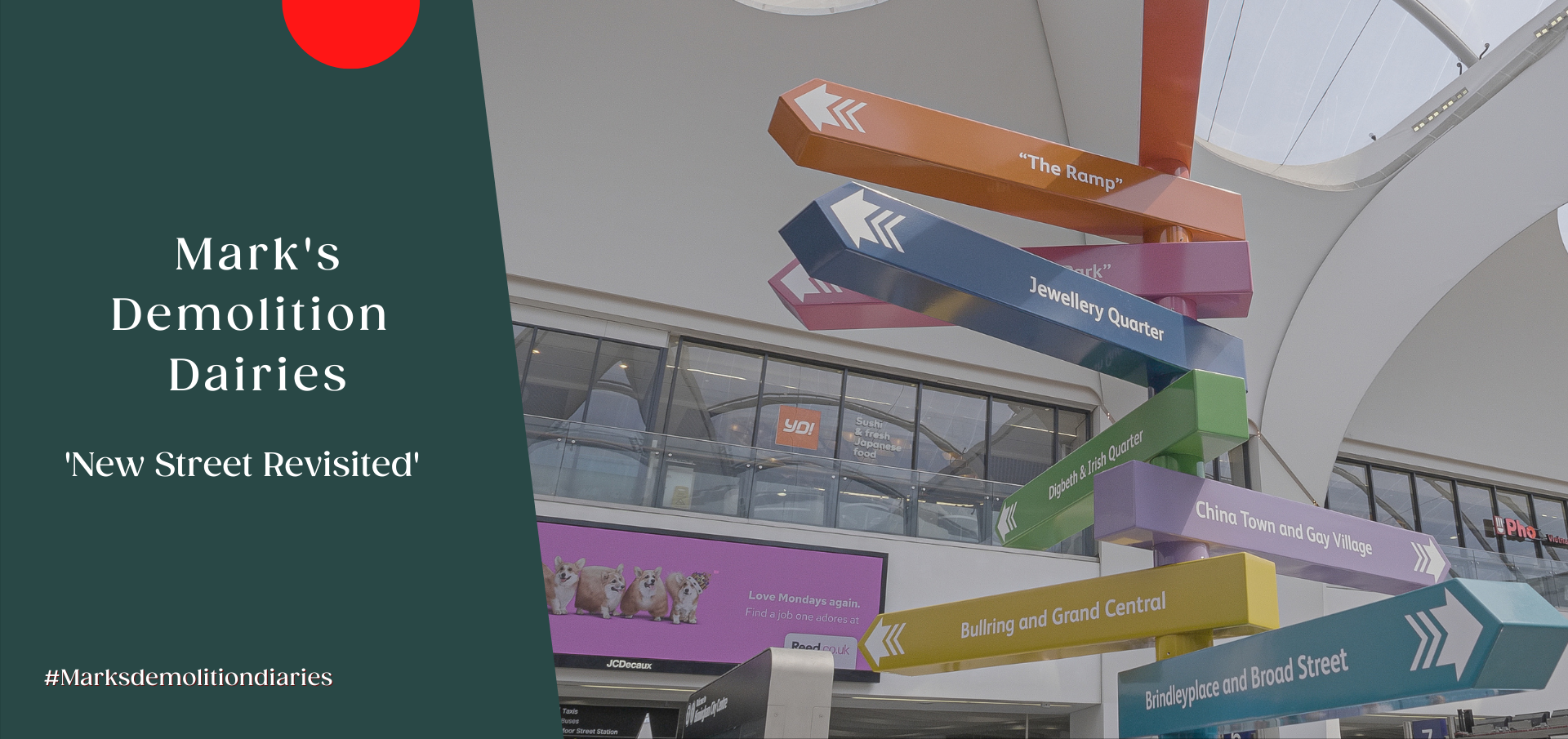In the latest episode of Mark’s Demolition Diaries we take a trip back to New Street station in Birmingham – site of the most complex project that Colemans have ever looked at, let alone tackled.
In the first of this two-part video, Mark walked around the city centre to look back at some of the jobs we’ve completed as part of the continued redevelopment of Birmingham city centre. This time he visits New Street, where Colemans played an instrumental role in facilitating the creation of Grand Central and the stunning atrium that welcomes visitors to Birmingham.
As Mark explains in the episode, with behind-the-scenes access thanks to Network Rail, this impressive structure is essentially a 200m x 200m square building in the heart the city centre. Through innovation and collaboration, we removed huge concrete beams to form a 50m x 50m hole in the centre of that building, directly above the live station, with very little access and strict limitations on dust, noise and vibration.
If that’s not enough, we did it in four and a half months – against a revised target of six months, which had already been halved from the initial 12 month programme.
Watch the video below to find out more about:
- The design and development of a bespoke ‘Megamuncher’ to enable the works, built specifically for the job in collaboration with JCB and the client
- How collaboration, modelling and a strong management system was key to the project success
- Access and egress challenges for the city centre location, directly above a busy rail station – including the ‘Mouse Hole’
- Dust suppression techniques developed to meet unique project challenges
- How the project led to further work with Network Rail, help Colemans to gain a reputation for rail station demolition and deconstruction
- Why we won ‘Best of the Best’ at the World Demolition Awards
“The client said to us you’ve got 12 months in the programme to do this, but I need you to do it in six. That work was delivered in four and a half months. And there’s absolutely no way we could have done that without working in collaboration with the client, the engineers and the rest of the team.”





